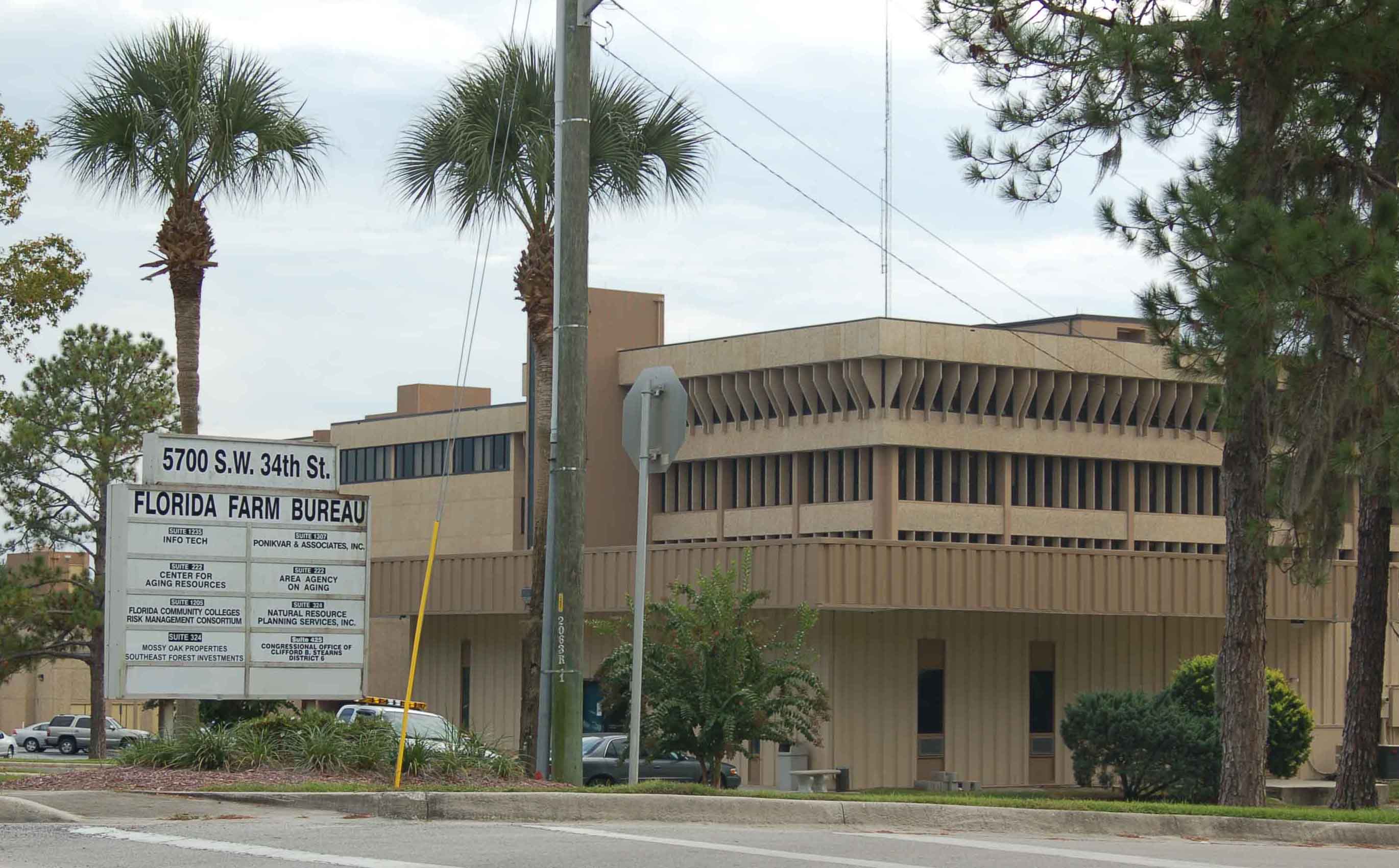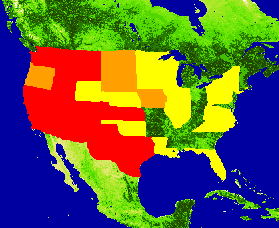
Vol. 2, No. 11, November 2006 |
 Printer-Friendly PDF Version Printer-Friendly PDF Version |
Contents |
Advisory Board Meets in Gainesville
|
The fourth 2006 meeting of the Florida SART Advisory Board will be held on Wednesday, December 6th in the second floor auditorium of the Florida Farm Bureau [352-378-1321] building, 5700 SW 34th Street, Gainesville. The meeting is scheduled to begin at 9:00 a.m. and should end by 3:00 p.m. |
Field Investigator Courses Open
The Florida Center for Public Health Preparedness, College of Public Health, University of South Florida, has opened registration for basic (FIRST) and intermediate (I-FIRST) courses in Field Investigator Response and Surveillance Training.

FIRST is a basic course designed to help public health staff and their community partners who may be called upon to assist epidemiology staff in their investigations during a public health crisis. There is no charge for the one-day, 8:00 a.m. to 5:00 p.m., course, but some on-line preparation is required. Participation is limited to 50.
- Jacksonville Region: December 5, 2006: Renaissance Resort at World Golf Village, St. Augustine http://www.fcphp.usf.edu/courses/course/course.asp?c=FIRST67JAX
- Tampa Region: January 30, 2007: Location TBD
http://www.fcphp.usf.edu/courses/course/course.asp?c=FIRST67TPA
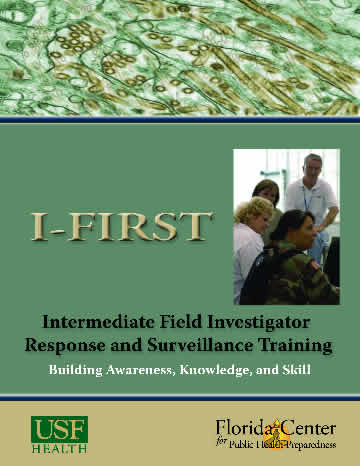
I-FIRST is the intermediate course to further develop the knowledge, skills and abilities of public health professionals and their community partners who may be deployed on Field Epidemiology Strike Teams. Members of these teams would assist epidemiology staff in disease investigations during a public health crisis. The focus is gastro-intestinal illness and avian influenza.
- Ft. Myers Region: November 15-16, 2006: Lido Beach Resort, Sarasota
http://www.fcphp.usf.edu/courses/course/course.asp?c=IFIRST67FTM
- Jacksonville Region: December 6-7, 2006: Renaissance Resort at World Golf Village, St. Augustine http://www.fcphp.usf.edu/courses/course/course.asp?c=IFIRST67JAX
- Tampa Region: January 31-February 1, 2007: Location TBD
http://www.fcphp.usf.edu/courses/course/course.asp?c=IFIRST67TPA
For more information, contact Pam Price, Coordinator, Education and Training
Florida Center for Public Health Preparedness, College of Public Health, University of South Florida, 13201 Bruce B. Downs Blvd. (MDC56), Tampa, FL 33612 (813) 974-3718; 574-3718 (Suncom) or (813) 974-6644 pprice@health.usf.edu www.fcphp.usf.edu/.
Conference In St. Petersburg Beach
As you prepare your travel plans and continuing education budgets for 2007, it is time to ink in Florida’s ESF17/SART Conference May 30-June 1, 2007, at the TradeWinds Island Grand Resort, St. Petersburg Beach. (www.tradewindsresort.com)
The conference is timed for the beginning of the 2007 hurricane season and the end of the school year. You may attend while your family swims at the pool or the beach, or shops for antiques. Greg Christy, Florida ESF 17 Coordinator says that he expects 200 to 300 people representing every facet of emergency preparedness and disaster readiness-planning to attend and participate.
Because of the full schedule of meetings and demonstrations, the event should be especially beneficial for county-level SART coordinators who will have opportunities to meet the people they would work with if a disaster or emergency affected their area.
Sessions are tentatively scheduled on animal, aquaculture, farm/nursery, terrorism awareness, emergency management and organizational skills under pressure. Individual sessions on forming a county SART program and using the SART website plus ICS-100 and IS-700 will be held.
Room rates are less than $100 per night, so this conference should be affordable as well as tremendously informative.
For updates and additional information, stay tuned: www.flsart.org!
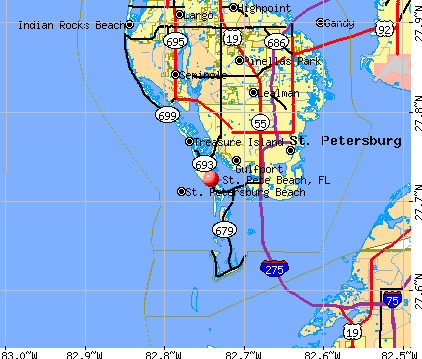
Education, information ?and fun, too.
Water Out Of Thin Air?
Pulling clean drinking water out of the air. In an increasingly thirsty world, it sounds like an alchemist’s dream.
A recent Associated Press (AP) news item reported on equipment designed to produce pure drinking water from water vapor suspended in the air. Essentially, the units are large de-humidifiers with filters: ceramic for particulate matter and activated charcoal for taste. The higher the humidity (the immediate aftermath of a hurricane, for instance), the more efficiently they operate.
Without citing studies or statistics, the AP writer suggested that the units were inefficient because electricity was required for operation. Boiling water or adding chemicals, the article suggested, would be more efficacious in an emergency. Of course, this estimation depends entirely on the circumstances.
Aqua Magic recently took their mobile HP 120-DRU (Disaster Relief Unit) on a “Hurricane Tour?in the southeast. Attached to a generator, it is self-contained on a trailer. The company says it can produce 120 gallons per day. If an individual needs three quarts a day, one of these units (priced at $35,000 to $40,000) continuously operating could supply water for a 120-person disaster-relief team. If a gallon of diesel at $2.50 produces 10 gallons of water, the net cost is 25?per gallon plus an amortized share of the base cost. (www.aquamagic.us)
Island Sky’s home/office model also runs on electricity and produces, the company says, 14 gallons a day at a cost of 10?per gallon. The unit is imported from Spain. (www.islandsky.com)
On a recent visit to the neighborhood Publix grocery store, the least cost gallon of water, the store brand, was 77?per gallon, plus tax.

One of the greatest challenges in an emergency situation is providing clean drinking water to responders and to survivors.
Dogs Dying from Sweetener
It seems logical that one would not feed candy, chewing gum or toothpaste to pets. These products may contain the sugar substitute Xylitol, and even small amounts can kill.
The digestive systems of humans and pets react differently to Xylitol. Humans absorb about half of the amount ingested. A dog will absorb almost all of it, and the result may be severe liver damage.
Clinicians at the American Society for the Prevention of Cruelty to Animals poison control center in Urbana, Illinois, say that Xylitol poisoning incidents ?often with gruesome results ?are on the rise.
Most poisoning cases result from an accident or an act of “kindness,?sharing one’s gum with a pet, for instance. Poisoning may happen after a dog pulls a bowl of muffins made with Xylitol off a table; or a cat eats that pack of gum on your dresser.
A pet that consumes any food products containing Xylitol should immediately be taken to a veterinarian, or you may call the ASPCA poison Hot Line (888) 426-4235 [there is a charge]. http://www.aspca.org/site/PageServer?pagename=pro_apcc

Many snack foods contain sugar substitute Xylitol, which can kill your pet. (Photo courtesy www.morguefile.com)
Exotic Update: Kudzu Vine
By now, every true Southerner knows the story of Kudzu. How it was introduced to the U.S. 130 years ago. How gardeners spread the vine; how it was developed for forage in the 1920s; and for erosion control in the ?0s. How “Kudzu Clubs?sprang up to promote it across the South. By the ?0s, however, doubts about the plant’s overall beneficial effects were seeded as the vine covered fields and forests, engulfing and killing trees. Thus, in 1972 the U.S. Department of Agriculture declared kudzu to be a weed. It has been uphill and downhill ever since for this tenacious exotic invasive.
According to the University of Florida Center for Aquatic and Invasive Plants, it takes from three to ten years of dedicated herbicide application to eradicate a kudzu patch. Growing as much as a foot a day and 60 feet per year, the drought-resistant, frost-resistant vine is assuredly hardy. Every place its vines touch may be the node for a new and functionally independent root system.
Estimates vary about land covered by kudzu, but The Center suggests that two million acres of southern forest may be choked in the grip of this invasive exotic, which has been identified in at least 14 Florida counties.
To learn more about kudzu and other invasive plants, animals and insects in Florida, visit these web sites:
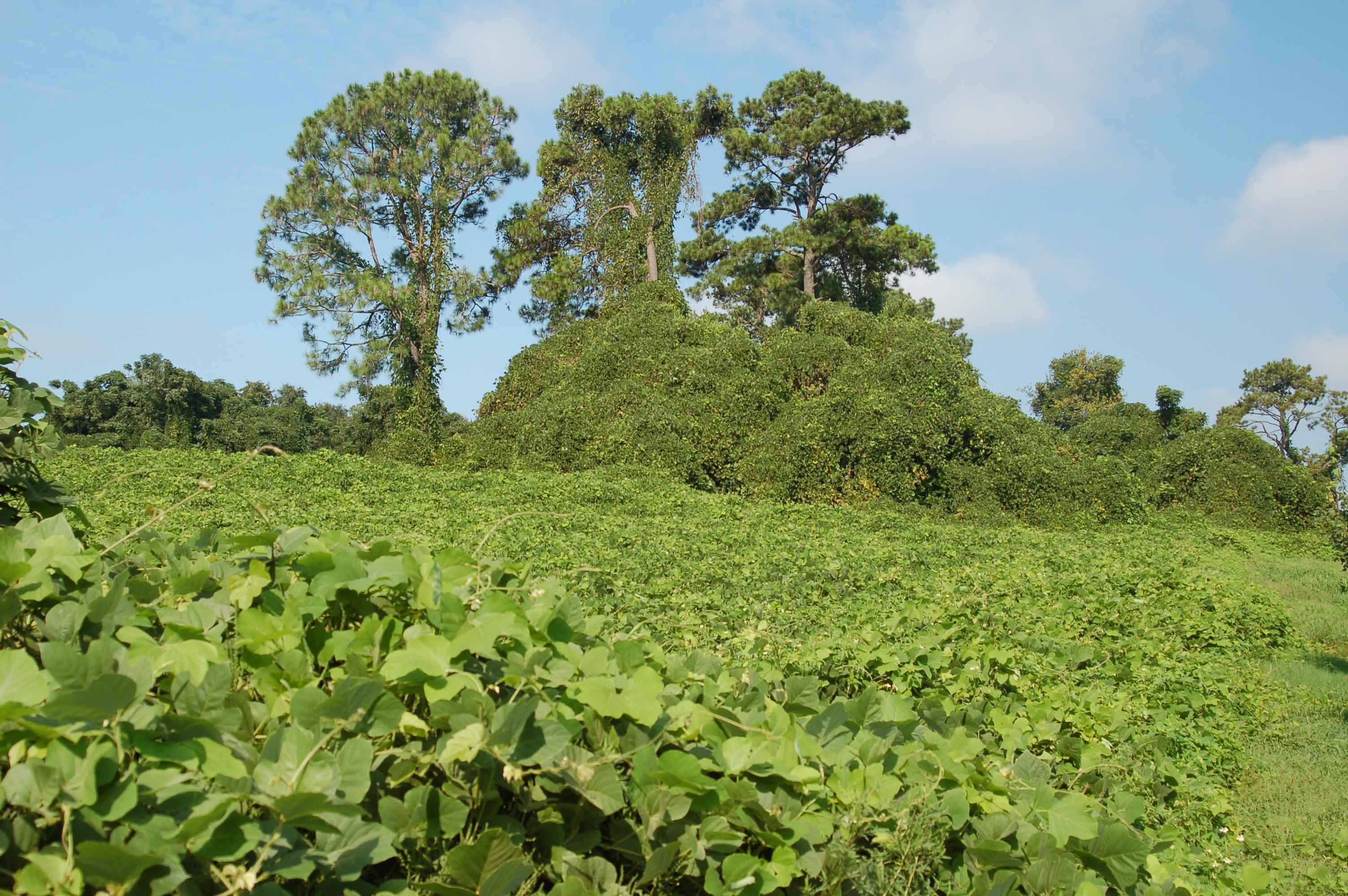
Kudzu threatens to overwhelm fields and trees east of Tallahassee
About the SART Sentinel
Editor: Rick Sapp, PhD, Technical Writer, Florida Department of Agriculture & Consumer Services, Division of Animal Industry [rsa5@cox.net]
Associate Editor: Gregory S. Christy, DVM, State ESF-17 Coordinator, Florida Department of Agriculture 7 Consumer Services, Division of Animal Industry [christg@doacs.state.fl.us]
The SART SENTINEL is an E-mail newsletter prepared monthly by Rick Sapp and the staff of the Florida State Agricultural Response Team. Past issues of the Sentinel are archived on the Florida SART Web Site, www.flsart.org.
If you have a story or photo that you would like to have considered for publication in The SART SENTINEL, please contact the Editors.

